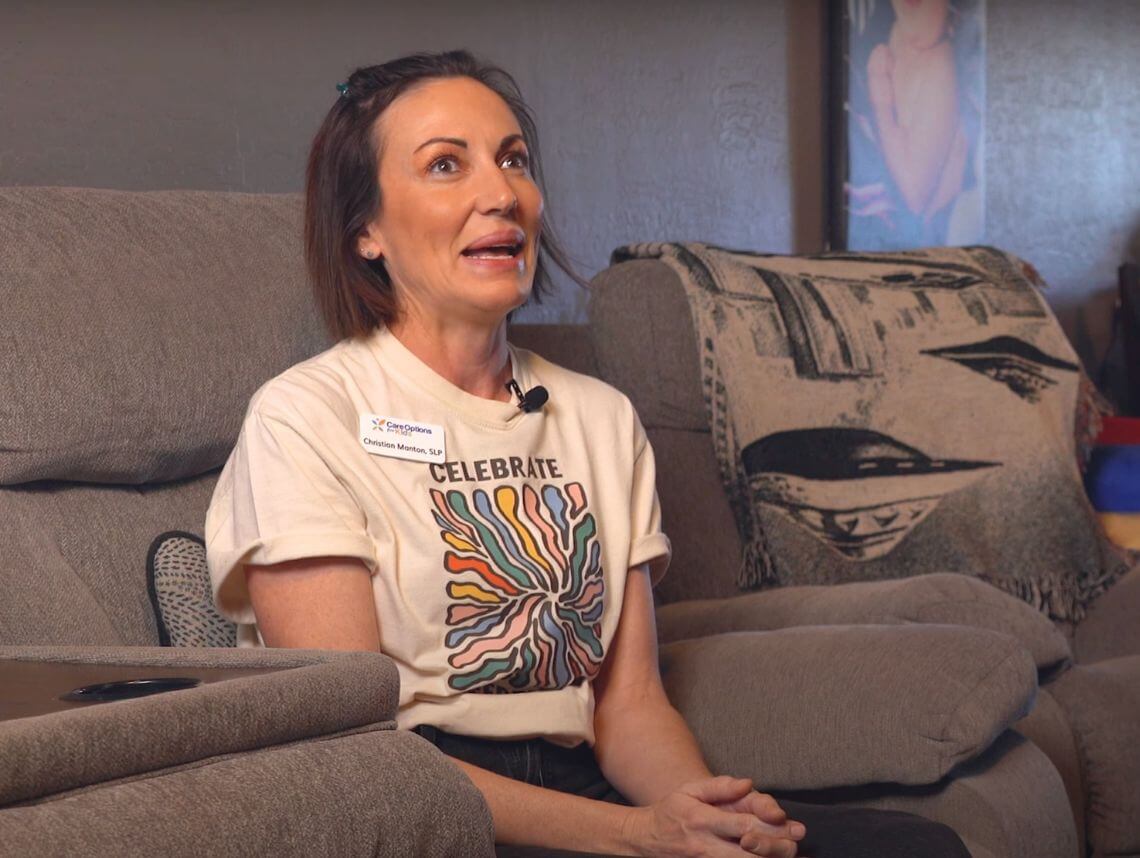Solace Blog
- Activities19
- Autism & Behavioral4
- Community154
- Early Intervention71
- Events & Giving Back20
- Extraordinary Kids22
- Family Caregiver4
- Home Care Therapy60
- News94
- Parent Articles83
- Patient Testimonial21
- Pediatric Therapy77
- Pediatric Therapy Career46
- Private Duty Nursing1
- School-Based Services1
- Telehealth Therapy27
- Tips & Advice66
Summer Reading List: Books to Inspire Therapist Growth
Cooling Off with Aquatic Therapy: Benefits and Best Practices
Sensory Activities For Kids

From School To Home: Christian’s Shift To Impactful Therapy
Speak, Listen, Connect: 6 Communication Strategies for Therapists

What is Autism Spectrum Disorder and How is it Diagnosed and Treated?
Autism or Autism Spectrum Disorder (ASD) is a condition seen in children and adults that can affect the way that they are able to interact with others in social situations and may be accompanied by a wide range of adaptive patterns of behavior. There is a wide range of symptoms and signs, and the severity of each can be very different from individual to individual. This can make understanding what is going on in your child difficult, and may make the diagnosis and treatment of the condition delayed as clinicians work to pinpoint what is going on. Overall, this can be an overwhelming process in the beginning, but here is a summary of the condition, what to look for, how it is diagnosed, and what treatment would most likely consist of. As always with developmental conditions, the sooner they are diagnosed and treated, the better the chance of normal social and learning integration for your child.
What symptoms of autism look like
Every child will show symptoms differently and some may not even appear until they are older, but some of the most prevalent signs to look for in your child will be:
- Avoidance of eye contact
- Easily upset by disturbances to schedule
- Lack of response when directly spoken to
- Shows little interest in socializing
- Not noticing or discerning the emotions of others
- Rarely or never uses gestures by one year of age
- Constant repetition of a certain words or phrase
- Intense reaction to stimuli
- Not interested in any type of “pretend” play
- Hyper focused interests
- Repetitive movements such as flapping or spinning
- Lining up toys during play
- Aversion to physical contact
- Inappropriate reaction to social cues
These are just a few symptoms that may be seen, but it’s important to know that symptoms will manifest differently in each child as will the severity of the signs.
Why autism is considered a spectrum
Autism is now more frequently known as Autism Spectrum Disorder because instead of it being considered one specific disorder, it is now thought of as more a range of conditions that vary greatly in both type and severity depending on the case and the individual. Some individuals who get diagnosed are considered very high functioning and may only need minimal therapy while others may have more profound symptoms that require different attention and care. While the range is extensive, there are two main components that are looked to diagnose someone on the spectrum. The two main factors used in determining if someone is on the spectrum are: 1) if there is a persistent impairment in social interaction, and 2) repetitive patterns of behavior.
Before the concept of the Spectrum was adopted, autism was primarily diagnosed into 4 types: Asperger’s, Autistic Disorder, Childhood Disintegrative Disorder and Pervasive Developmental Disorder (PDD-NOS); however these classifications were merged together when the DSM-5 changed the criteria for an autism diagnosis. The DSM is the Diagnostic and Statistical Manual of Mental Disorders, the standard text that is used to diagnose Mental and Behavioral conditions based on a set of specific criteria that a patient may exhibit or experience. The DSM is updated regularly and is currently on its fifth iteration (DSM-5).
How autism is diagnosed
Diagnosing autism is not as straightforward as it would be for other types of issues because symptoms can often be confused for other issues such as sensory processing disorder or other types of intellectual disabilities. Additionally, there are no medical tests or procedures that can concretely lead to a diagnosis. When someone is screened for autism, it requires a great deal of looking into their past history and behaviors, as well as keeping tabs on if the child is meeting certain developmental milestones as they grow. While some signs maybe be able to be seen in babies as young as 18 months, and a clinician may even be able to soundly diagnose by as early as age 2, it is also quite common for a true diagnosis to come later in life, with some not being officially diagnosed as autistic until their late teens all the way into adulthood.
What a screening is like
It is recommended that all children actually have an Autism Spectrum Disorder screening with their pediatrician at the 18 month and 24 month mark. This is done as part of their routine wellness visit and is most commonly a questionnaire that is filled out by the parents which can help pinpoint and start a conversation about any concerning behaviors or issues that should be assessed.
If during the screening the child shows that they may potentially have ASD, this is not by any means a diagnosis. It is simply a starting point to which a full assessment may be warranted. When a full assessment occurs, it is done with a team of specialists who will work with and talk to the parents as well as any other caregivers. This is to get a better understanding of symptoms or patterns that may have been picked up on that were flagged as concerning. In addition to this, specialists will also interact with the child to observe their behaviors and conduct various tests and examinations to look for any types of language delays or developmental impairments. While all this may sounds scary and overwhelming, the specialists will always keep your child’s comfort a top priority when performing these assessments.
What treatments are available?
If your child has been officially been diagnosed with Autism Spectrum Disorder, then there are a number of resources and treatments available. There is no one specific approach that works for everyone and a treatment approach will be highly personalized. However, some of the most common options are:
- Medication
- Early intervention
- Occupational therapy
- Speech therapy
- Cognitive behavioral therapy
- Physical Therapy
- Relationship Development Intervention
- Behavioral Interventions
In addition to this, there may also be a focus on treating some common issues that often go with an Autism diagnosis such as sleep disturbances, ADD/ADHD, feeding issues, gastrointestinal problems and anxiety among others.
Solace early intervention, occupational and speech therapy for Autism
If you have concerns that your child may have Autism Spectrum Disorder or has recently gotten an official diagnosis, then Solace has experienced clinicians that specialize in early intervention as well as occupational, speech and physical therapists who will come right to your door and work with your child one-on-one. This approach allows for both the parents and the clinician to work together to provide personalized care in a way that makes the child feel the most comfortable. A home setting is also ideal in helping the family integrate the lessons seamlessly into daily family life. If you would like to speak with someone who can help you to get started, please don’t hesitate to contact us at 303-432-8487 option 1 or visit our parental referral page to get in touch for an evaluation for your child.
Share this Post